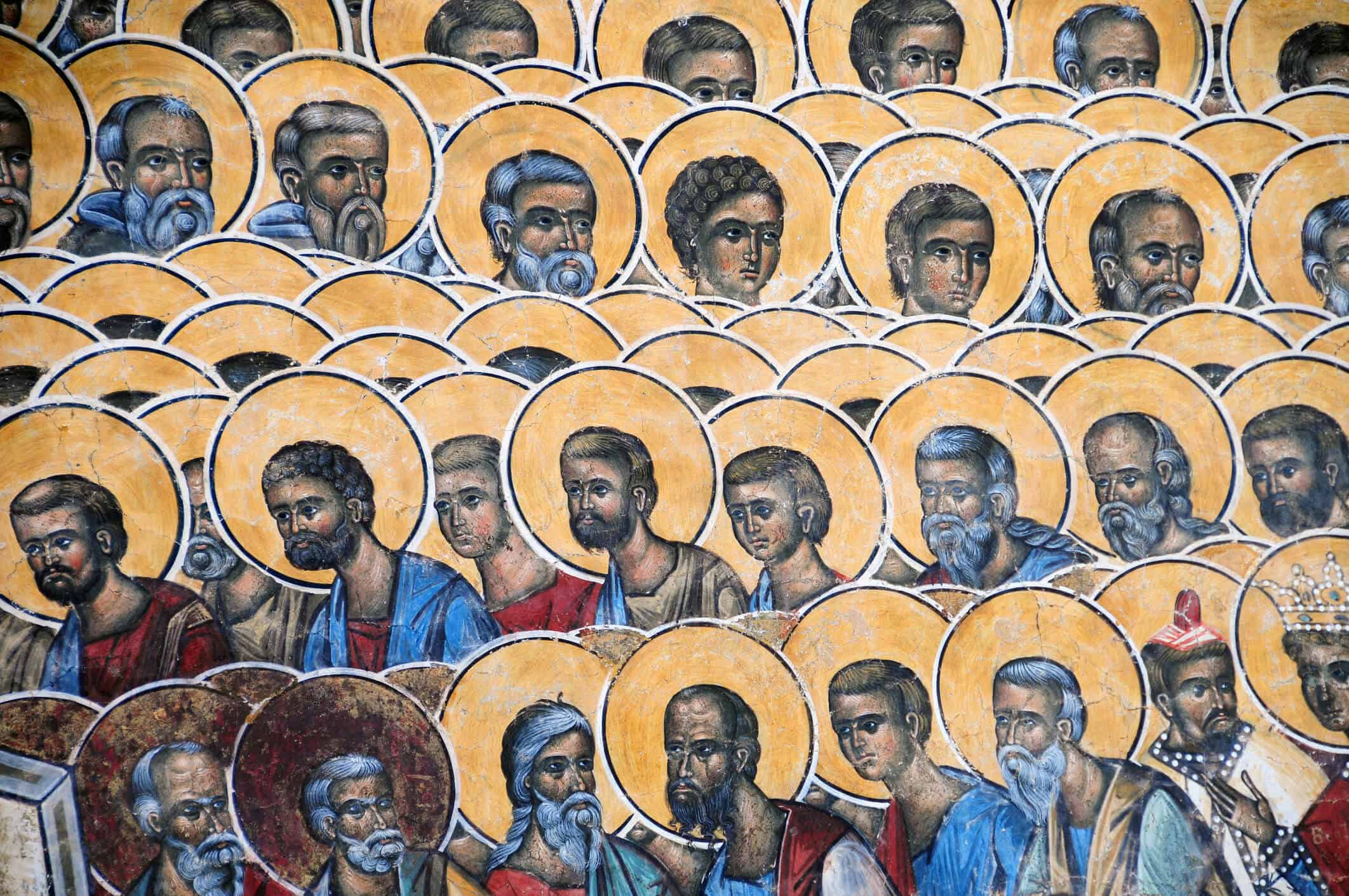May 1
St. Joseph the Worker
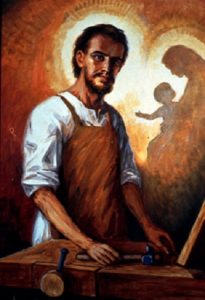
Joseph is the patron saint of many things, including the universal Church, fathers, the dying, social justice, unborn children, travelers, immigrants, a happy death, families, expectant mothers (pregnant women), travelers, house sellers and buyers, craftsmen, and engineers. In order to Christianize the concept of labor and give to all workmen a model and a protector, the feast of St. Joseph the Worker was established by Pope Pius XII in 1955. He described that “no worker was ever more completely and profoundly penetrated by (the spirit of Christ) than the foster father of Jesus, who lived with Him in closest intimacy and community of family life and work.”
St Joseph was himself a humble carpenter who knew what it was to work hard, often for meagre pay, in order to earn a living to support his wife and Jesus, his foster child. Though a hard worker, St Joseph knew and embraced poverty and when presenting gifts at Jesus’ presentation in the Temple, it was the gift of the poor that St Joseph presented to God, ‘a pair of turtledoves or two young pigeons’ (Lk 2:24).
By the daily labor in his shop, offered to God with patience and joy, St. Joseph provided for the necessities of his holy spouse and of the Incarnate Son of God, and thus became an example to all laborers. “Workmen and all those laboring in conditions of poverty will have reasons to rejoice rather than grieve, since they have in common with the Holy Family daily preoccupations and cares”(Leo XIII).
May 3
Sts. Philip the Apostle and St James the Less
For centuries, the Catholic Church had special feasts to honor only four of the apostles: Sts. Peter and Paul, St. John the Evangelist, and St. Andrew, the brother of Peter. The Church memorialized the remaining apostles all together on June 29. But in the sixth century, the bodies of Sts. Philip and James were brought to Rome from the East and were laid to rest in the Basilica of the Holy Apostles. Since they arrived together at the same location, the Church instituted a single feast day for both apostles.
St. James was the brother of the apostle Jude Thaddeus, both being sons of Alphaeus and of one of the “Three Marys” at the Cross. James was referred to as “the brother of the Lord,” because his mother was related to the Blessed Virgin Mary. Upon His Resurrection, Christ appeared to James personally before any other apostle (1 Cor 15:7).
He was called “the Less” because he was younger than St. John’s brother, St. James the Great. He was the author of the Letter of James, in which he writes about faith and works. He became the leader of the church in Jerusalem, its first bishop, playing an important role in the Church’s first council, the Council of Jerusalem (Acts 15).
In 62 A.D., according to the historians Eusebius and Hegesippus, James was martyred for the Faith in the Spring of the year 62. The Jewish leaders accused James of breaking the Law and turned him over to a mob. He was dragged to the top of the Temple and, when he refused to recant his claim that Jesus was the Messiah, that Jesus was the Messiah, he was thrown from the top of the temple. After surviving the fall, he was stoned and then clubbed to death as he knelt in prayer.
St. Philip was one of Jesus’ original apostles; he came from the same town as Peter and Andrew, Bethsaida in Galilee. At the time he was called, stories say that he was a married man and the father to several daughters. He was present at the miracle of the loaves and the fishes. He was shy and timid by nature, but so powerful was his faith after he was called by Jesus, he immediately brought his friend Nathaniel into the inner circle of Christ’s friends. Three days later they both witnessed Jesus’s first miracle at Cana. Just before the Passion, Jesus answered Philip’s query to show them the Father, by teaching the apostles of his union with the Father,
After Pentecost, he was given extraordinary graces to preach the gospel in Greece. In the end, Philip followed in the footsteps of James the Less and many of the other apostles by being martyred for his faith in Christ. After preaching with Bartholomew in Hierapolis, Greece, he was scourged, imprisoned, and ultimately crucified upside down in 62 A.D. He was said to have even continued preaching from his cross.
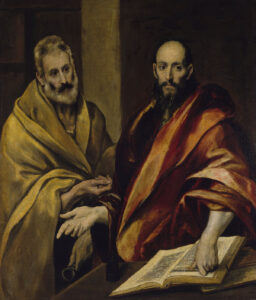
May 10
St. Damien de Veuster of Moloka’i
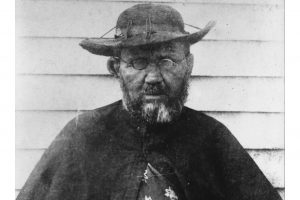
“Without the constant presence of Our Divine Master upon the altar in my poor chapels, I never could have persevered casting my lot with the lepers of Molokai”
St. Damien of Molokai
Jozef De Veuster grew up in rural Belgium, the youngest of seven children. Three of his older siblings had taken religious vows and inspired Jozef to do the same. He joined the Congregation of the Sacred Hearts of Jesus and Mary and took the religious name Damien. At the age of 20, while still a seminarian in France, Damien de Veuster volunteered for mission work. His wish was granted and he was assigned to Hawaii, where he was ordained.
Two years later in 1866, the government of Hawaii established a leper colony on Molokai. It was believed at that time that the disease was highly contagious; so, victims of the disease were forced into quarantine, suffering the worst of conditions and living in complete anarchy. Fr. Damien made the tri[ to Molokai where he provided the missing leadership for the colony. He organized services, such as medical care and burial of the dead, as well as building houses, schools, and eventually a church, St. Philomena. Becoming attached to the people of the colony, he asked permission to stay there, which was granted.
In 1885, Fr. Damien contracted leprosy himself. Until he died four years later, he continued his ministry, despite his body being severely crippled by the disease. When Hawaii became a state in 1959, it selected Damien as one of its two representatives in the Statuary Hall at the US Capitol. The day of his passing, April 15, is a statewide holiday in Hawaii.
May 13
Our Lady of Fatima
On May 13th, 1917, the Blessed Virgin Mary appeared in the small town of Fatima, a city 110 miles north of Lisbon. Between May 13 and October 13, 1917, the Blessed Virgin Mary appeared six times to three Portuguese shepherd children: Lúcia dos Santos and her cousins Jacinta and Francisco Marto, Portuguese shepherds from Aljustrel. At that time, Europe was involved in an extremely bloody war. Portugal itself was in political turmoil, having overthrown its monarchy in 1910; the government disbanded religious organizations soon after.
At the first appearance, Mary asked the children to return to that spot on the thirteenth of each month for the next six months. Mary repeatedly asked the children to offer themselves in prayer and penance “to obtain peace for the world and the end of the war,” the First World War then ravaging Europe. She identified Herself as “Our Lady of the Rosary”, continually asking that they pray the rosary daily for the conversion of sinners and for the conversion of Russia, which had recently overthrown Czar Nicholas II and was soon to fall under communism. She also spoke of observing first Saturdays and devotion to her Immaculate Heart. During the final apparition on October 13, 1917, the dance of the sun took place in front of 70,000 people.
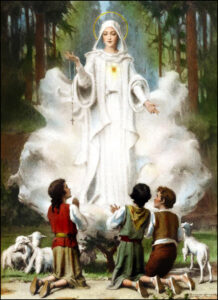
“Say the Rosary every day, to bring peace to the world and an end to the war.”
Our Lady of Fatima
May 14
St. Matthias the Apostle
Of this apostle nothing certain is known beyond what is contained in Acts 1:21-26. Saint Clement of Alexandria assures us, from tradition, that this saint was one of the seventy-two disciples, and this was confirmed by both Eusebius and Saint Jerome. He was one of the disciples during the whole of our Lord’s public life and, like the others was a witness of His resurrection. Because he could bear witness to the resurrection, he was chosen to take the place of Judas among the Twelve, following Judas’ betrayal of Jesus and suicide.
Saint Matthias received the Holy Spirit at Pentecost with the rest soon after his election; and after the dispersion of the disciples, he applied himself with zeal to the functions of his apostleship, in converting nations to the faith. Unreliable legend has him preaching in Judea, Cappadocia, Macedonia, Egypt and Ethiopia, stressing the need for mortification of the flesh with regard to its sensual and irregular desires. He endured great persecutions and hardships in his ministry of more than 30 years. While preaching in Macedonia, he was given a strongly intoxicating liquor known for blinding those who had imbibed it. But he felt no harm, and he restored to sight 250 men whom it had blinded.
He met his end by being beheaded with an axe at Colchis in 80AD. The Church venerates St. Matthias on an equal footing with the other Apostles, whose voices resound throughout the world, from generation to generation, giving testimony to what they saw and heard in their life with our Lord. His alleged relics were removed by Empress Saint Helena and are now venerated at Saint Matthias’s Abbey in Trier and in the basilica of St. Maria Maggiore in Rome.
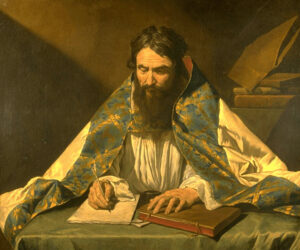
“It behooves us to combat the flesh, and make use of it, without pampering it by unlawful gratifications. As to the soul, we must develop her power by faith and knowledge.”
(attributed to St. Matthias by St. Clement of Alexandria)
May 17
St. Paschal Baylon
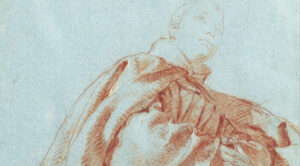
“God is as really present in the consecrated Host, as He is, in the glory of Heaven.”
St Paschal Baylon
The 16th century has been called the Golden Age of the Church in Spain, for it gave birth to Ignatius of Loyola, Francis Xavier, Teresa of Avila, John of the Cross and Peter of Alcantara. St. Paschal was born in 1540 on the feast of Pentecost to poor Spanish parents, Martin Baylon and Elizabeth Jubera, in Torre Hermosa, in Aragon, Spain. Between the ages of seven and 24 he worked as a shepherd and began a life of self mortification and voluntary poverty. He was able to pray on the job and was especially attentive to the church bell, which rang at the Elevation during Mass. Paschal had a very honest streak in him. He once offered to pay owners of crops for any damage his animals caused!
Receiving a vision which told him to enter a nearby Franciscan community, he became a Franciscan lay brother of the Alcantrine reform in 1564 and gave himself wholeheartedly to a life of penance. Though he was urged to study for the priesthood, he chose to be a brother. At various times he served as doorkeeper, cook, or gardener. He was careful to observe the vow of poverty and would never waste any food or anything given for the use of the friars. When he was porter and took care of the poor coming to the door, he developed a reputation for great generosity. His charity to the poor and afflicted, his unfailing courtesy and humility were remarkable even by Franciscan standards.
He had a great devotion to the Blessed Sacrament and although poorly educated, he defended the Real Presence against the blasphemies of a Calvinist preacher, and narrowly escaped death at the hands of a mob.
Paschal died at a friary in Villareal, and was canonized in 1690. Many miracles are attributed to him before and after his death. His tomb was desecrated and relics destroyed by the communists during the Spanish Civil war. (1936-39)
May 21
Bl. Franz Jägerstätter
Franz Jägerstätter was born on 20 May 1907 in St Radegund, Upper Austria, to his unmarried mother, Rosalia Huber and to Franz Bachmeier, who was killed during World War I, when the boy was less than ten years old. His mother then married local famer Heinrich Jägerstätter who adopted Franz in 1917. Franz had some little education in the village’s one room schoolhouse, but his adoptive father was serious about the boy being able to read so that he could educate himself.
He led a rather wild life in his early 20’s, but by his late 20’s he married his wife Franziska in 1936, and settled down to life as a farmer, to provide for his wife and three daughters. Besides his farm work, Franz served as the parish sacristan and began receiving the Eucharist daily. While carrying out his duties as husband and bread-winner for his wife and three daughters, this ordinary man began thinking deeply about obedience to legitimate authority and obedience to God, about mortal life and eternal life and about Jesus’ suffering and Passion.
He became known as a vocal critic of the Nazis; he was the only one in his village to vote against Austrian unification with Germany in 1938. He was called up for military service and sworn in on 17 June 1940. He was shortly able to return to his farm, but he became convinced that participation in the war was a serious sin and decided that any future call-up had to be met with his refusal to fight. In February 1943 Franz was called up again for military service. When he announced his refusal to fight, he was arrested, given a military trial, and convicted of sedition. He spent time in prison praying, supporting other prisoners, and writing a series of letters and essays, in which he said, “I cannot believe that, just because one has a wife and children, a man is free to offend God.” He was finally led to the guillotine for his execution at the age of 36.
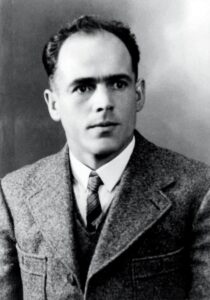
“Since the death of Christ, almost every century has seen the persecution of Christians, there have always been heroes and martyrs who gave their lives – often in horrible ways – for Christ and their faith. If we hope to reach our goal some day, then we, too, must become heroes of the faith.”
Bl. Franz Jägerstätter
May 22
St. Rita of Cascia
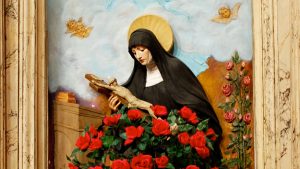
“Be at peace with your own soul, then heaven and earth will be at peace with you.”
St. Rita of Cascia
Rita Lotti was born in 1386 in Umbria, Italy. Although attracted to the religious life, her parents betrothed her to Paolo Mancini, an abusive and harsh man who was immersed in the political disputes of the region. Rita endured her husbands cruelty for 18 unhappy years, until he was killed in a brawl with his political opponents. Her twin sons swore to avenge their father, but Rita’s prayers and interventions moved them to forgive their father’s murder.
She was prevented from joining the religious life by relatives of her husband’s murderers, but through her prayerful efforts, the two sides were partially reconciled, allowing her to be admitted to the monastery of Saint Mary Magdalen in Cascia. She lived there for 40 years in prayer, doing works of charity, and working for peace in the region. She received visions and wounds on her forehead which resembled the crown of thorns.
On her deathbed, she asked a visitor from her home town to bring her a rose from her family’s estate. It being January, her visitor had no real hope of obtaining a rose; however, arriving at her family’s home, he found a single perfect rose blooming on an otherwise bare bush.
May 26
St. Philip Neri
Philip Neri was born in Florence of a poor family of four children. Philip received his early schooling in the humanities from the Dominican order in San Marino. After receiving a vision that was his Christian conversion, he left his family and traveled to Rome, where he initially found employment as a tutor.
As a young man, Philip had two passions in his life: learning and the poor. He studied a multitude of subjects, including philosophy and theology; then, after three years, he sold his books to give money to the poor. For 3 years, Philip lived as a hermit in Rome. But this life became more and more difficult. His cheerful disposition, genuine love for others, and bold spirituality led him to wander the streets of Rome, making acquaintances wherever he went. He was a true evangelist and attracted lay persons from all levels of Roman society, eventually forming a discussion and prayer group with a vocation to tend to the poor. He became friends with both the poor and with those who were well known, including Ignatius of Loyola, Pius V and Charles Borromeo.
Although his desire was become a missionary or to live a solitary hermetical life, he received further visions that compelled him to remain in Rome. He became a priest in 1551 and served the faithful in San Girolamo. He was sought after as a confessor; he had the gift of knowledge of a penitent’s sins before the person actually confessed them. He began working with youth, finding safe places for them to play, becoming involved in their lives.
Some of Philip’s followers became priests and lived together in community. This was the beginning of the Oratory, the religious institute he founded in 1575. The mission of the Oratory was to live in prayerful community while preaching, teaching, and caring for the poor. They held daily services in the afternoon, consisting of informal talks, and vernacular hymns and prayers.
Philip’s advice was sought by many of the prominent figures of his day. He is one of the influential figures of the Counter-Reformation. His work with lay persons was directly counter to the widespread clericalism affecting the Church at that time. He was equally appreciated as an advisor to the rich and famous, converting to personal holiness many of the influential people within the Church itself. He died on the feast of Corpus Christi in in 1595 after hearing confessions.
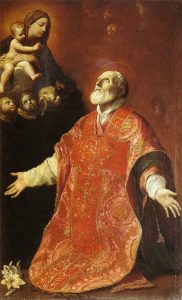
A joyful heart is more easily made perfect than a downcast one.
St. Philip Neri
May 30
St. Joan of Arc
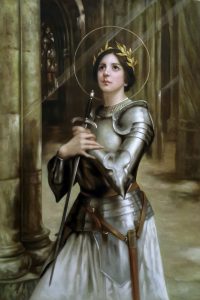
“Since God had commanded it, it was necessary that I do it.”
St. Joan of Arc
Joan of Arc, a national heroine of France, was born to a peasant family in Domremy, France in 1412 during the Hundred Years War. Joan was fourteen when she first heard voices that identified themselves as Saints Michael the Archangel, Catherine of Alexandria, and Margaret of Antioch; telling her to drive out the English. At their command, she went to the Dauphin, the uncrowned French prince, at Chinon, with a bid to “save France.” After his advisers confirmed Joan’s virtues, she was given an army and sent to Orleans as a part of an effort to lift the siege of that city. Possessing remarkable mental and physical courage, she led them to victory at the age of 18, under a banner that proclaimed, “Jesus, Mary.” Several additional victories led to Charles VII’s coronation at Reims.
The next year, at the siege of Compiegne, Joan was captured while fighting a rear-guard action against the Burgundians who were allies of the English. After nine months of negotiations, she was handed over to the English, who accused her of heresy and witchcraft and put her on trial.
The trial records witness to her unswerving fidelity to the Church. Despite many attempts to confuse and demoralize her, she conducted herself astutely and with such prudence and subtlety that the court was forced to end public sessions. In fact, those who were interrogating her were stupefied by her skill in evading the many theological traps set for her. But in the end, she was convicted of being a relapsed heretic, and handed over for execution. Before Joan was burned at the stake, she addressed a Dominican priest: “I pray you, go to the nearest church, and bring me the cross, and hold it up level with my eyes until I am dead. I would have the cross on which God hung ever before my eyes while life lasts in me.”
She died just so, at the age of 19, calling on the name of Jesus. “We have burned a saint,” an onlooker proclaimed. Twenty-five years later, in 1456, a retrial was ordered by Pope Callixtus III. The court dismissed the charges against her, confirmed her innocence, and declared her a martyr. She was canonized in 1920.

